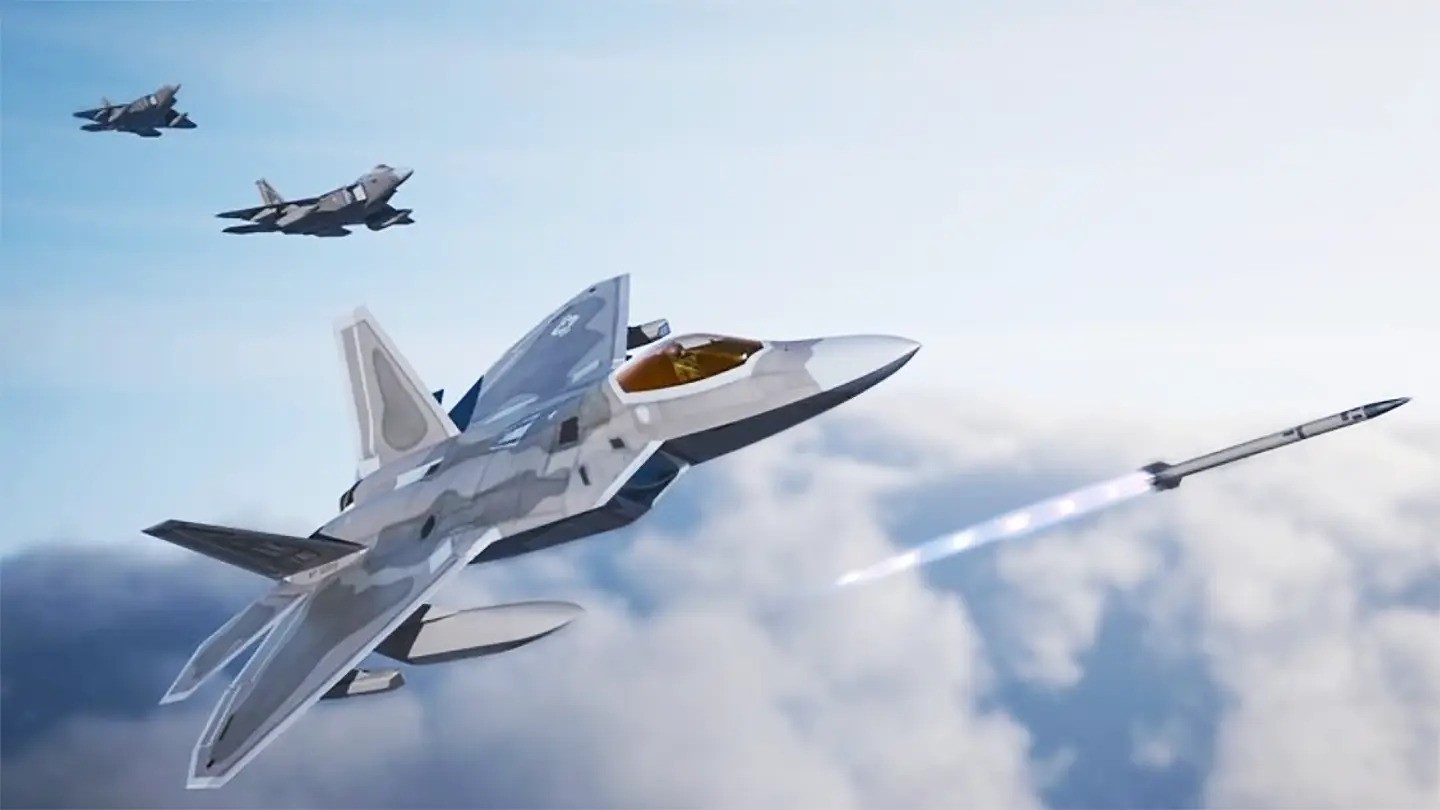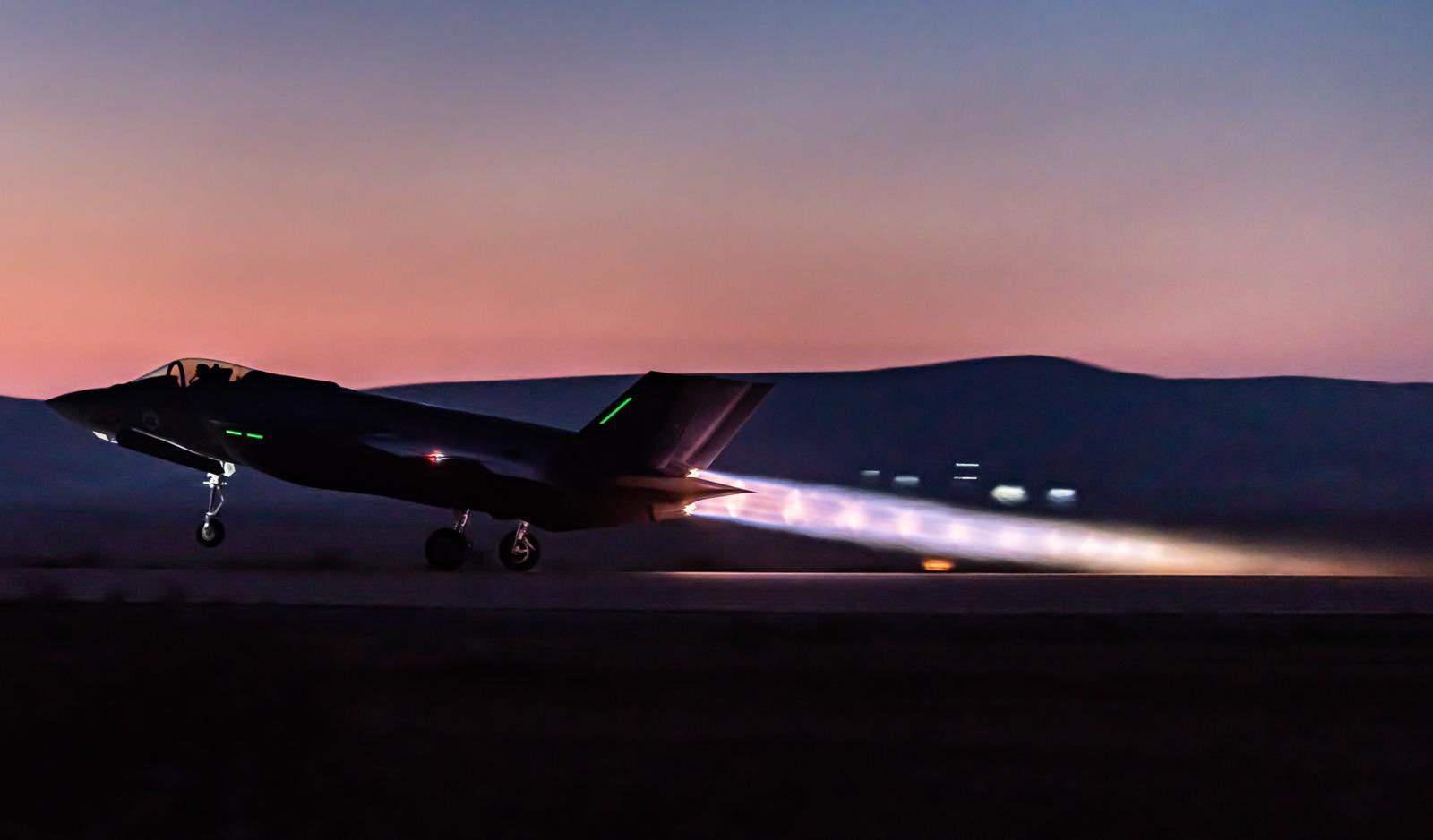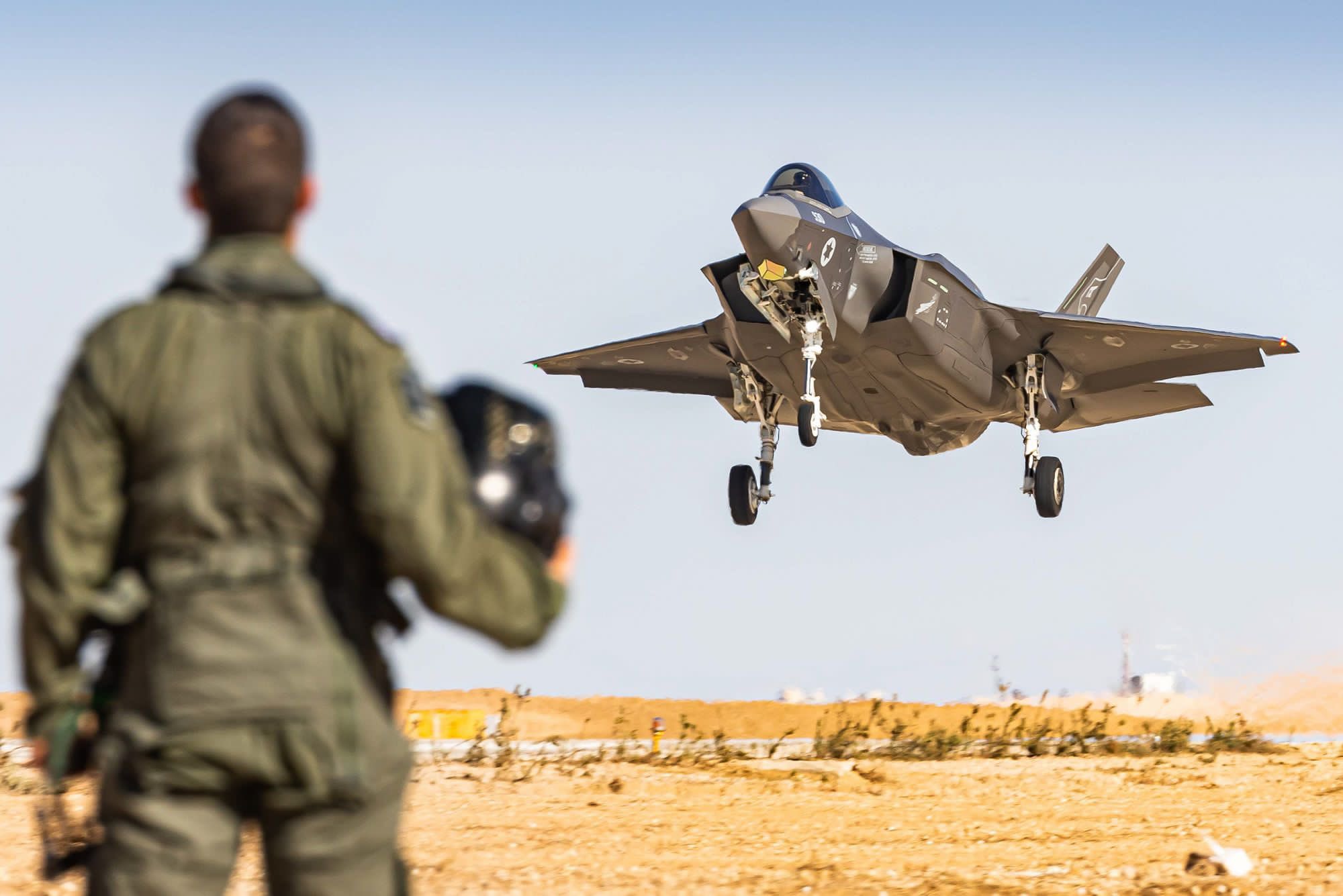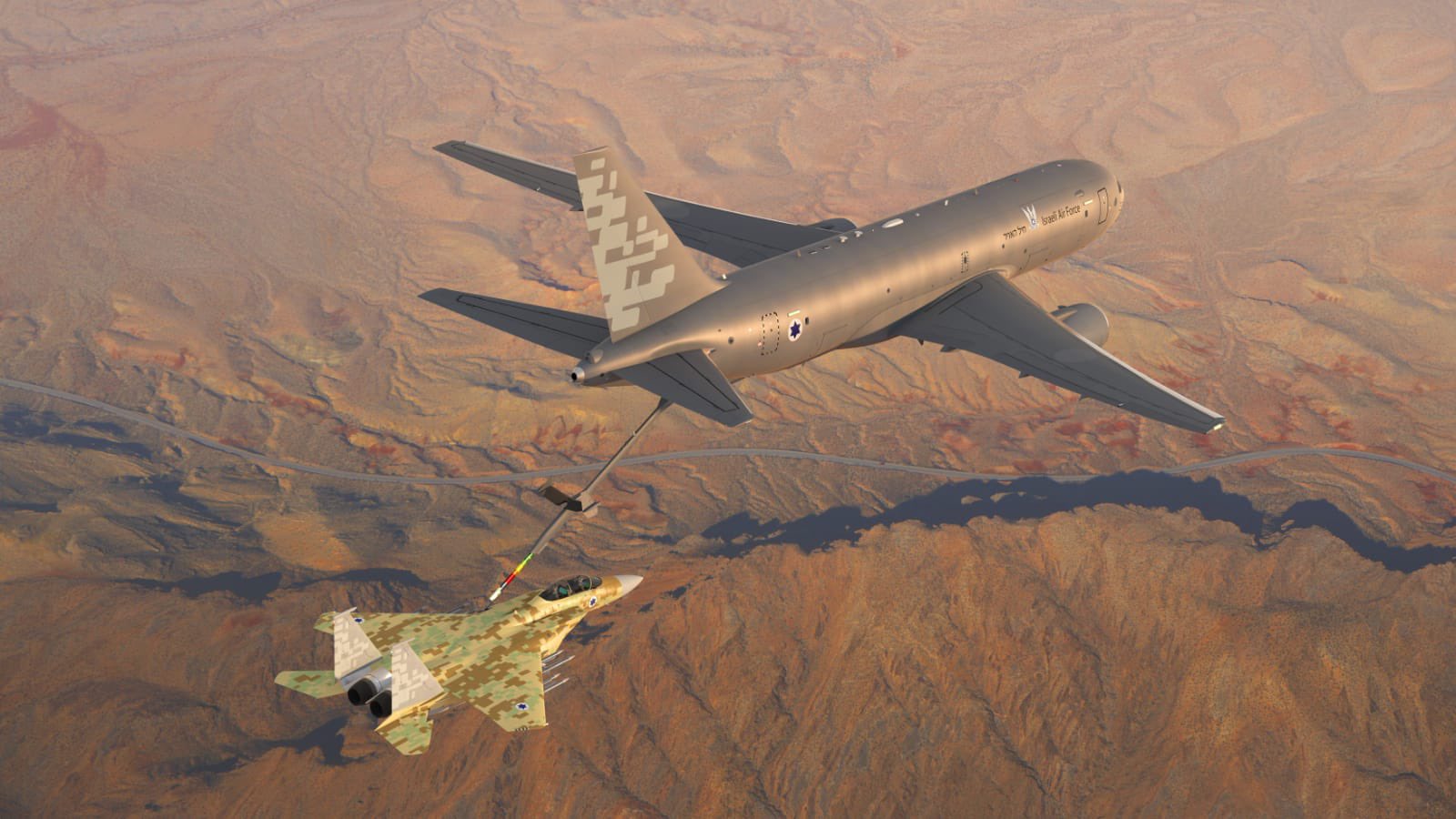Israeli F-35Is could attack Iran without the need for in-flight refueling
The Israeli Air Force (IAF) and local industry reportedly have made modifications to the F-35I that would allow them to attack Iranian nuclear facilities without the need to refuel in the air.
According to The Jerusalem Post, IAF has developed a new capability to be able to fly its F-35I Adir stealth fighter jets from Israel to the Islamic Republic of Iran without the need to use the services of an in-flight refueling aircraft.
This development is a boost to the IAF’s capabilities to conduct long-range precision strikes and is a sign that the Israeli military is stepping up preparations for a future strike against Iran’s nuclear facilities.
How to go further?
Initially, the plan was to use refueling aircraft. To this end, the Israeli Defense Ministry had purchased two (eventually eight) Boeing KC-46 Pegasus for this purpose.
See also: Israel signed the contracts for the purchase of 12 CH-53K King Stallion and two KC-46 Pegasus
But the timing was not what the IAF needed. The US was asked to accelerate the delivery of the KC-46s to support an imminent attack on Iran, but the answer was negative. Therefore, the remaining option was to increase the range of the fighters.
There are still no details on how the IAF managed to increase the range of its F-35I fighters, but it is reasonable to think that they managed to develop stealthy external fuel tanks, which do not significantly increase the radar signature of the fighters.
The idea of low radar cross-section (RCS) external fuel tanks is not new and is being proposed for USAF F-22 modernization program.

Another possibility would be for Israeli industry to have designed conformal fuel tanks attached to the F-35I fuselage, as the F-15E or F-16C/D (from the 50/52 blocks onwards) have. Constructed from the same materials as the F-35 airframe and with the same RAM (radiation absorbing material) coating, their addition would not significantly degrade the stealth capability of the Adir.
The Pratt & Whitney F135 engine that equips the F-35 could also have been tweaked to consume less fuel at certain flight regimes.

Or it could be a combination of diverse types of solutions, among which it could not be ruled out that Israel has managed, through a still secret security agreement, to make use of the military facilities of some Persian Gulf country, which shares Jerusalem’s aversion to a nuclear Iran.
It’s not just about getting there, it’s also about hitting
In addition, the IAF recently integrated a new 1000-kg bomb in the F-35I’s weapons arsenal, which can be carried inside the aircraft’s internal weapons bay without compromising its stealth.
The bomb – manufactured by Rafael Advanced Weapons Systems – is said to be self-guided and protected against jamming and electronic warfare systems. The bomb was recently used in a series of IAF tests, which results were presented to Defense Minister Benny Gantz.
«Iran’s surface-to-air missile systems and radars are substantial and are not the only challenge,» a defense official told the Jerusalem Post. «We have to be able to strike targets that are significant, and the strike has to be able to cause major damage. There are multiple targets in Iran at different distances.»

The IAF has conducted four full-scale simulated strikes against Iran over the past month. The first drill involved confronting simulated Iranian radar and detection systems, such as those protecting its nuclear facilities. The second involved simulating long-range combat flights, in this case to destinations in Europe.
Clearly Israel’s intent to destroy or seriously damage Iran’s nuclear capabilities is manifest, and every possible measure is being taken to accomplish this. Unless something unexpected happens, an Israeli attack seems inevitable, and it could happen soon.

/https://aviacionlinecdn.eleco.com.ar/media/2020/09/F-35I.jpg)

Para comentar, debés estar registradoPor favor, iniciá sesión